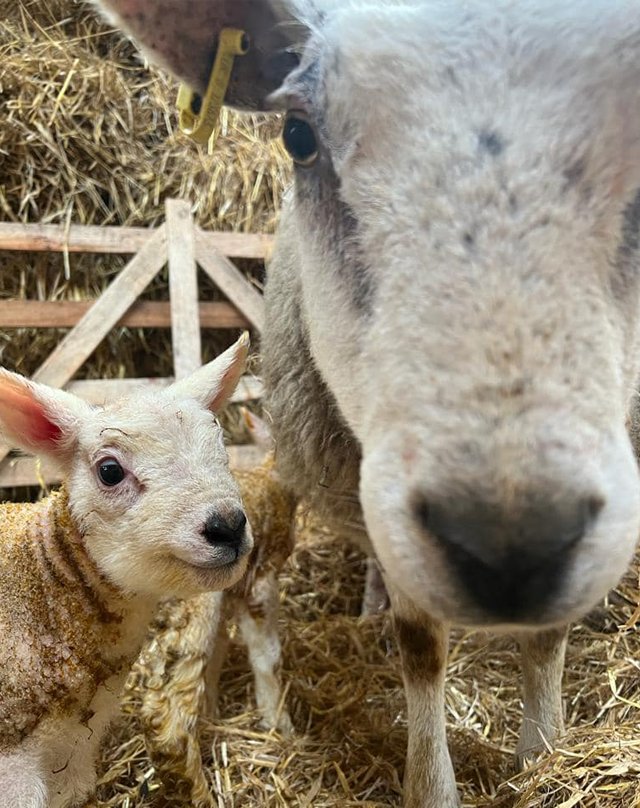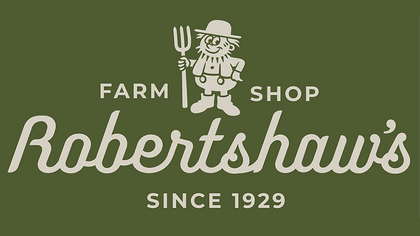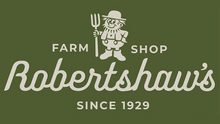
Keelham Hall Farm is a working farm with over 200 sheep. We breed Texel Cross as they are a hardy sheep and can deal with the harsh climate we get here, on top of the hill. We are 1148ft above sea level and possibly the highest shop situated in England. Being so high up, it's not uncommon for us to have alot of snow in winter. Luckily we have a plough for the tractor, so being stuck in the snow is never a problem - it also keeps the car park and the roads around us clear too. We may get the bad weather in winter but we get the best views on a clear day. You can see Ingleborough, one of the highest mountains in Yorkshire, from our car park.
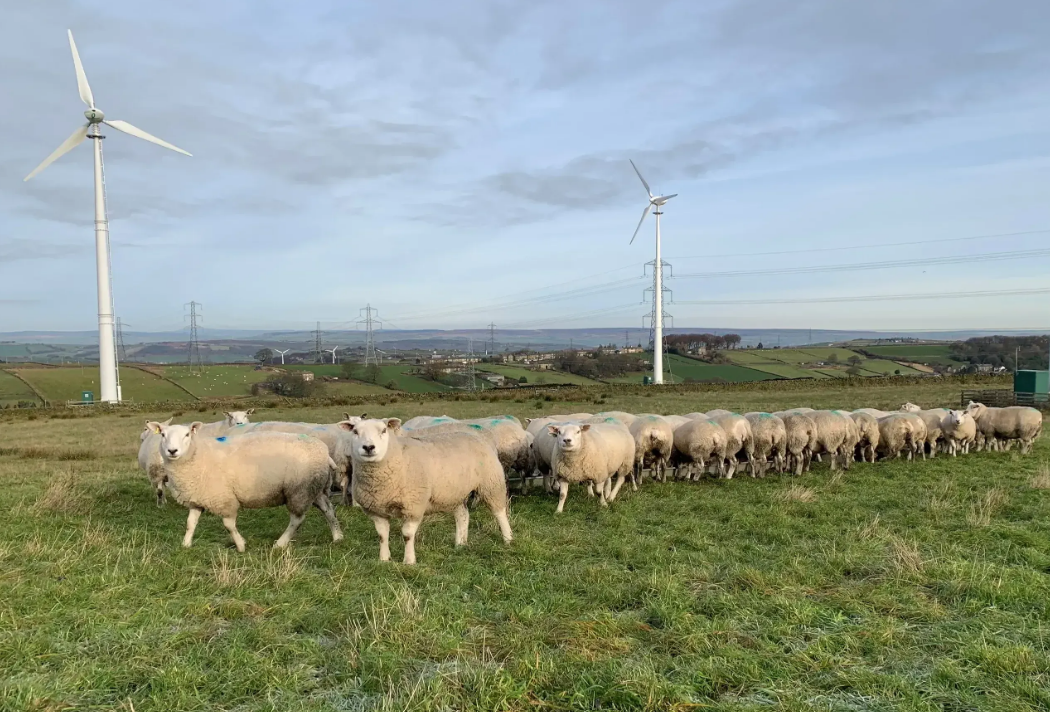
Sustainability
We care about the land and future generations. This is why we use renewable forms of energy where possible, to minimise our impact on the environment. We have our own wind turbines on the farm, and a scheme in place to bale cardboard and plastic for recycling. We are constantly reviewing our packaging and we offer loose fruit and veg and the option to buy exactly what you need at the Butchery and Deli counters.
Life on the farm is busy, early every morning we check on the sheep. We do a scan around to make sure there is nothing obviously wrong with any of them and that all the fencing is intact. We'll check that they are all standing upright, sheep are prone to accidents, so a good indicator that they are all ok is if they are standing. The sheep mainly feed on the grass, but we do like to give the sheep some pellets in their troughs. We like to hand feed a few sheep to keep them friendly so that we can better handle them. You never know if you need to help one of them and it's much easier if you don't have to chase them around the field. Trust us, we've learnt the hard way!
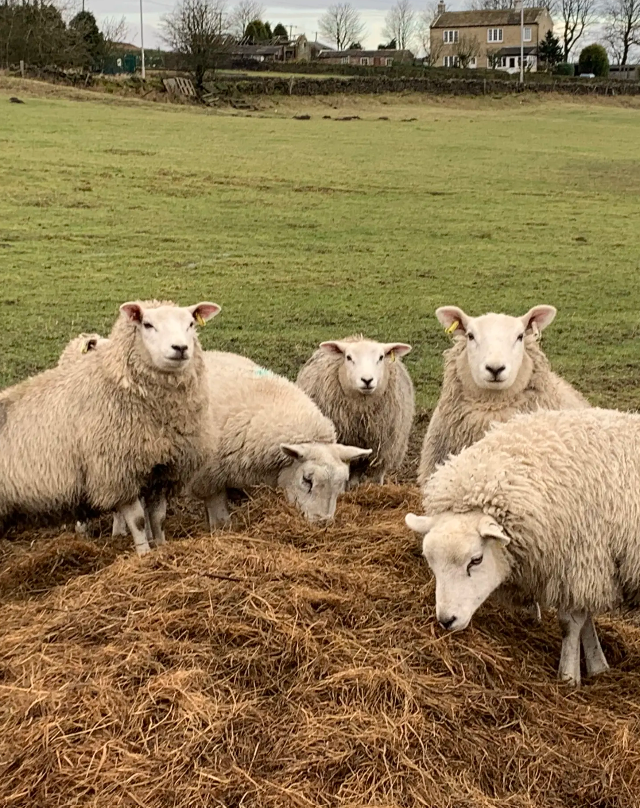
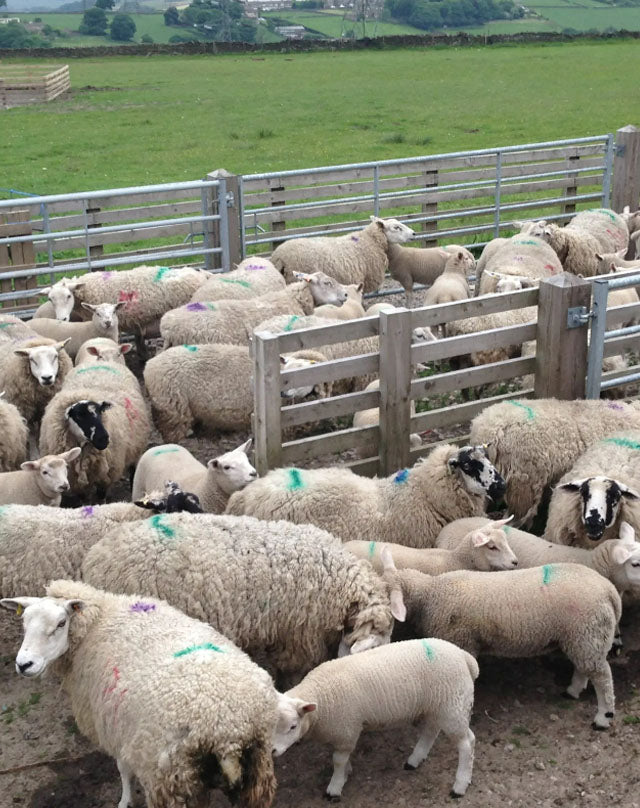
In Winter when the grass is low, the sheep graze on haylage which is cut in the summer. They also get a few more sheep pellets, a full belly keeps them nice and warm.
In tupping season, we'll put our tups (boy sheep) in with the ewes. We'll mark up the tups chest so that we can see which ewes they have mated with. The tups usually go in with the ewes in Autumn, and we scan the sheep just before Christmas to see which ewes are pregnant. We'll mark the sheep up with a number, so we know how many lambs they are carrying.
Our lambing season is in springtime, it usually falls around Easter and it's days and nights in the lambing shed, making sure all the little ones arrive safely. You'll notice in the fields that the sheep have numbers - we mark the sheep and lambs with a matching number, just incase a little one gets lost. This way, we know who the mum is and can reunite them.
Sometimes a ewe will have more than two lambs, they struggle with the third lamb and can't always look after them, so a foster mum is found, usually a ewe that has only had one lamb. This way all of the lambs are happy and healthy.
